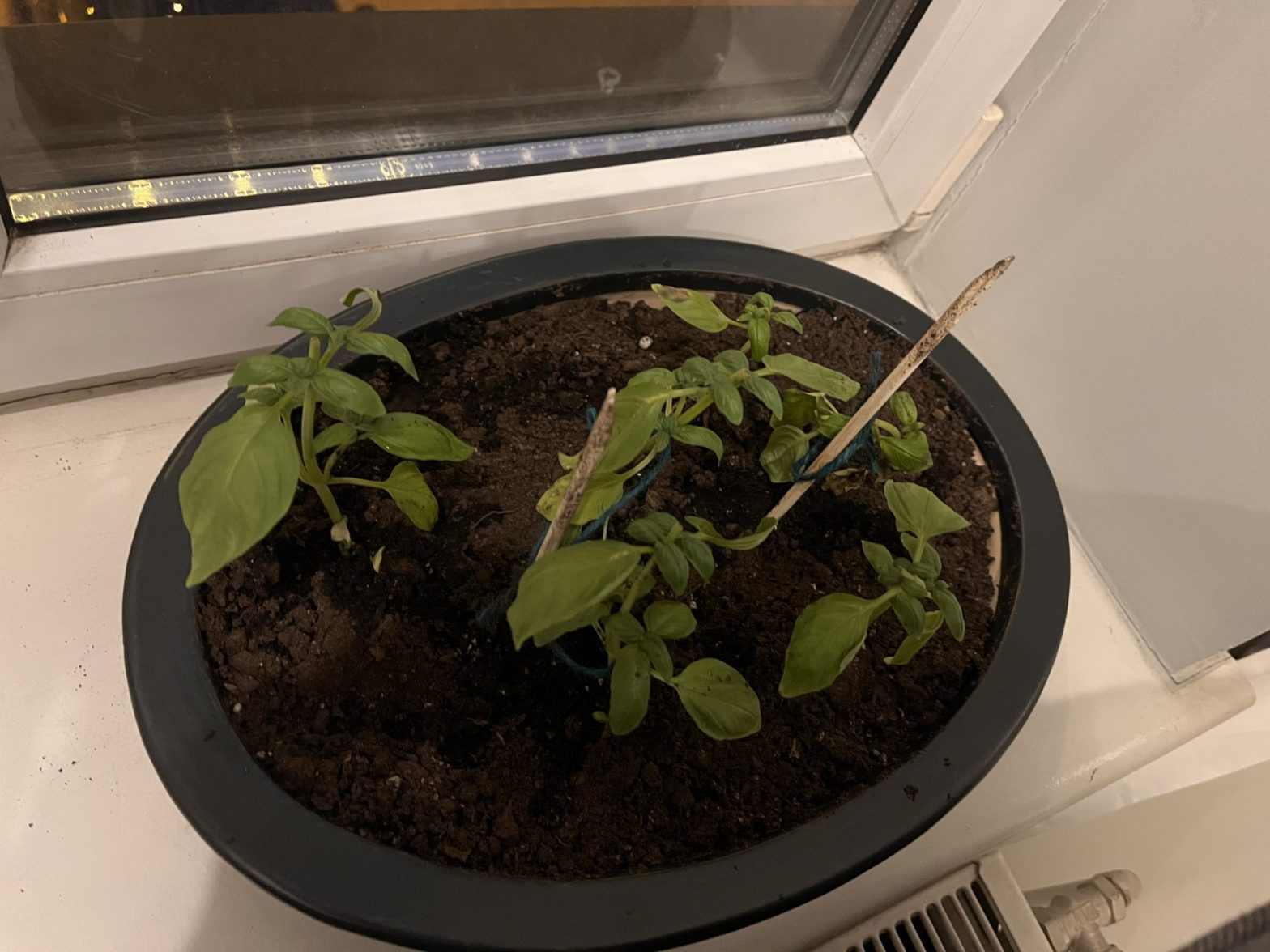General description
Ocimum basilicum, commonly known as Basil, is a fragrant herb widely used in culinary dishes around the world. Native to tropical regions from central Africa to Southeast Asia, Basil belongs to the Lamiaceae family. The plant is characterized by its bright green, ovate leaves that grow opposite each other on square stems. Basil plants can reach heights of 30-60 centimeters (12-24 inches) and produce small white or purple flowers. Known for its sweet, peppery flavor, Basil is a staple in many cuisines and is valued for its aromatic leaves and potential health benefits, including anti-inflammatory and antibacterial properties. It is suitable for both outdoor gardens and indoor pots.
Basic care
| Sunlight requirements | Watering schedule | Coffee grounds |
| Full sunlight | 3 days | In moderate amounts |
Tips
- Light: Basil thrives best in full sunlight, requiring at least 6-8 hours of direct sunlight each day. It can tolerate partial shade, but insufficient light will result in leggy growth and reduced flavor. If growing indoors, place Basil in a sunny window or under grow lights.
- Watering: Keep the soil consistently moist but not waterlogged. Water Basil plants weekly, ensuring that the top inch of soil dries out slightly between waterings. In hotter climates or during peak growing season, you may need to water more frequently.
- Soil Type: Plant Basil in a rich, well-draining soil. A mix of garden soil and organic compost is ideal, providing the nutrients necessary for healthy growth. Ensure the soil is loose and well-aerated to promote root development.
- Coffee Grounds: Coffee grounds can be beneficial for Basil when used in moderation. They add organic matter to the soil and can help improve soil structure and drainage. Mix used coffee grounds into the compost or sprinkle lightly around the base of the plant.
- Temperature and Humidity: Basil prefers warm, humid conditions. Ideal temperatures range from 18°C to 30°C (65°F to 85°F). It is sensitive to cold and frost, so ensure that outdoor plants are protected from low temperatures, and bring indoor plants indoors during the cooler months.
- Fertilization: Feed Basil plants with a balanced, organic fertilizer every 4-6 weeks during the growing season (spring and summer). Avoid over-fertilizing, as this can reduce the essential oil content in the leaves, diminishing their flavor.
- Pruning: Regular pruning encourages bushier growth and prolongs the life of the Basil plant. Pinch off the tips of the stems, including the central shoot, when the plant reaches about 6 inches in height. Remove any flower buds to keep the plant producing leaves.
- Repotting: If growing Basil in containers, repot as needed when the plant becomes root-bound. Choose a pot that is slightly larger with adequate drainage holes. Refresh the soil with a mix of fresh potting soil and compost to encourage continued growth and optimal leaf production.
Watering Frequency: Every 3 day(s)
Last Watered On: 2024-09-07 17:52:41
